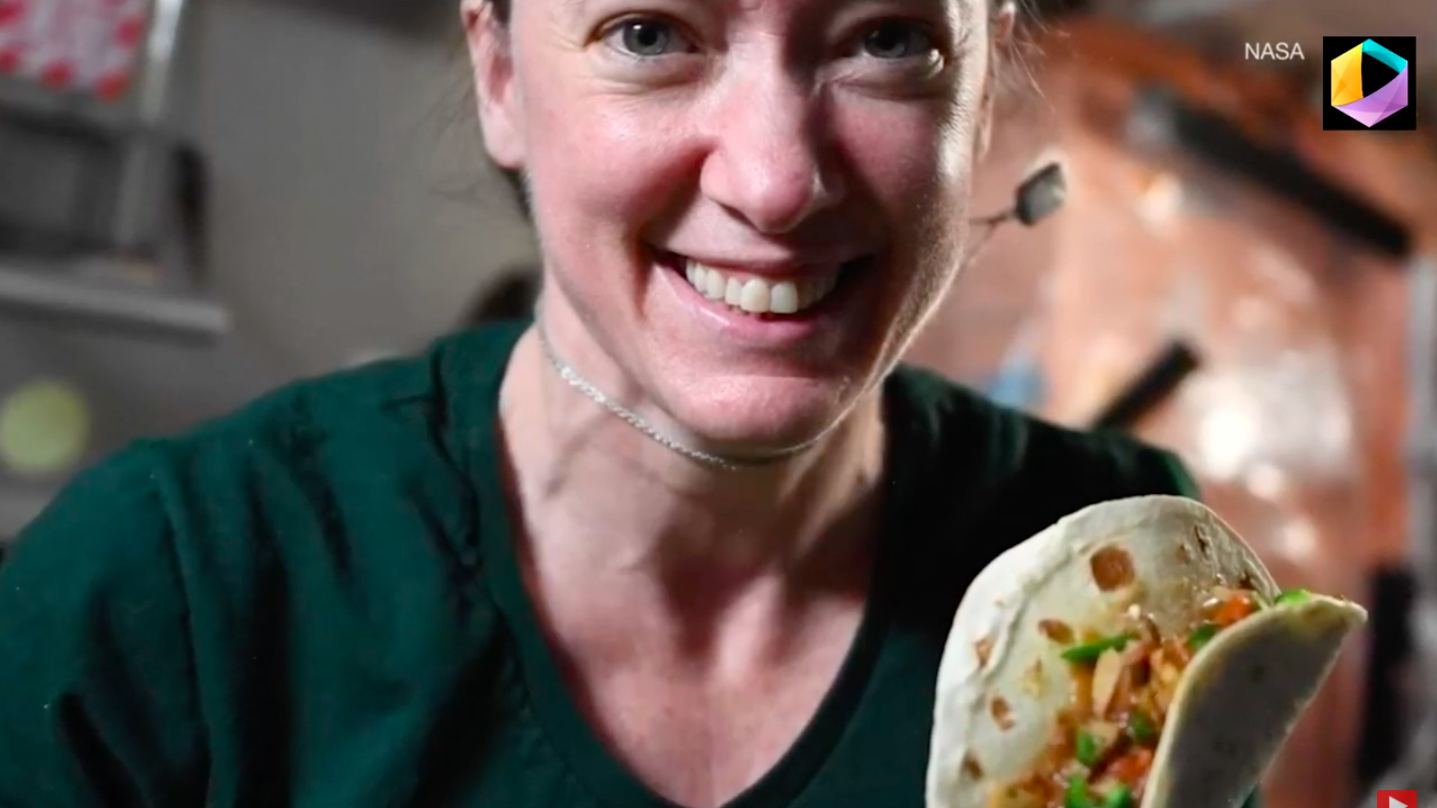How A Taco Party In Space Opens Up Future Possibilities For Astronaut Food
To celebrate a successful pepper crop, astronauts made themselves tacos aboard the International Space Station.
On November 26, NASA astronaut Mark Vande Hei began to pick the first of a fresh crop of chile peppers grown in space on the International Space Station. The chile pepper experiment began in July and was their second successful chile harvest to date, 137 days after planting.
In order to celebrate the first taste of the new crop, NASA astronaut Megan McArthur made everyone a batch of tacos using seven of the peppers, as well as fajita beef, rehydrated tomatoes, and rehydrated artichokes. She tweeted that they were her "best space tacos yet." CNN reports on how complicated space gardening is, and why growing fresh food in space is such a big deal.
Friday Feasting! After the harvest, we got to taste red and green chile. Then we filled out surveys (got to have the data! 😁). Finally, I made my best space tacos yet: fajita beef, rehydrated tomatoes & artichokes, and HATCH CHILE! https://t.co/pzvS5A6z5u pic.twitter.com/fJ8yLZuhZS
— Megan McArthur (@Astro_Megan) October 29, 2021
In total, 26 chile peppers from four plants were grown for the experiment, which broke the record for feeding the most astronauts from space-grown produce. Twelve of the peppers are coming back home to Earth for further study.
The pepper crop, otherwise known as Plant Habitat-04 (PH-04), is unique in that peppers take significantly longer to grow than previous space gardening experiments, such as radishes, lettuce, and flowering zinnias.
Matt Romeyn, principal investigator for PH-04, said in a statement:
PH-04 pushed the state-of-the-art in space crop production significantly. With this experiment, we took a field cultivar (plant variety) of a Hatch chile pepper from New Mexico, dwarfed it to fit inside the plant habitat, and figured out how to productively grow the first generally recognized fruiting crop in space — all in a span of a couple years.
The peppers were sanitized before the crew were allowed to dig into the tacos, and their success signaled multiple possibilities for future astronaut nutrition on long-term space missions.
"All indications are some of the fruit were on the spicier side, which is not unexpected, given the unknown effect microgravity could have on the capsaicin levels of peppers," Romeyn said. Another interesting observation was that the peppers had a two-week growth delay, and that their stems were totally straight as opposed to curved, like they are on Earth, which Romeyn said was "definitely a microgravity effect."
We've previously written about astronaut food in different scenarios, including pizza parties, and as mentioned, fresh fruit and vegetables are typically scarce. Most of the time, astronauts receive fresh produce with resupply shipments, but on future long-haul missions (like to the moon, or even Mars), fresh food deliveries would be much harder to accomplish. Growing crops on the station would provide key nutrients like vitamin K and C, which get lost over time in prepackaged food.
Crops like peppers provide vitamin C and other nutrients, and peppers are a relatively easy crop to grow since they self-pollinate. Another benefit is that they naturally contain a low microbe count, so astronauts can eat them more or less right off the plant. Oh, and they taste good. Especially on tacos.
Because astronauts lose a bit of their sense of taste along with smell, peppery spice makes food just taste better in general. And when food tastes better, it naturally boosts morale. Another positive side effect is that tending to plants is also a joyful experience in and of itself for the astronauts.
Nicole Dufour, PH-04's project manager, said in a statement:
The biggest benefit that I've seen personally is the impact growing plants has on the crew. They are so engaged when they are interacting with the plants, especially when it's a crop plant like the peppers. We discovered the crew had been taking the door shade off every day to check on the plants and look at the peppers. That's not something we asked them to do — they just wanted to because they enjoyed it so much.
Next on the menu is possibly microgreens, herbs, leafy greens, legumes, and dwarf tomatoes, which are all delicious here on planet Earth; I imagine they're even more satisfying in space for multiple reasons. But what's even more important is the possibility of astronauts being able to sustain themselves, which opens up way more doors for space travel.
